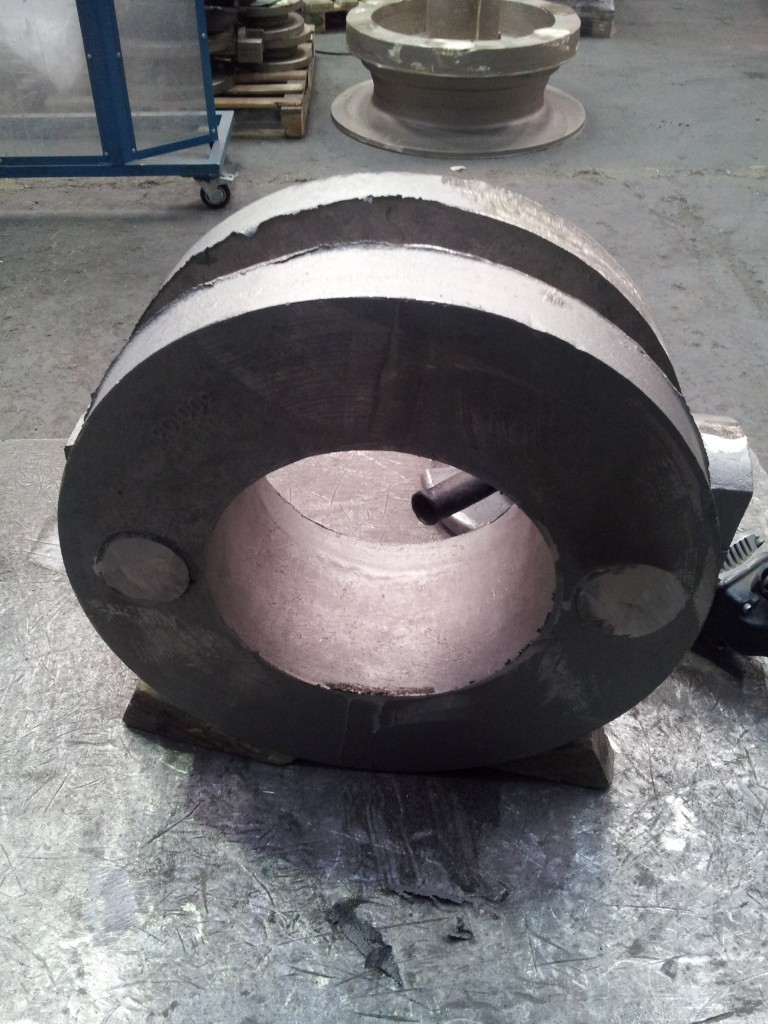Common Metals & Materials Used in Butterfly Valve Manufacture
Many different materials can be used in the design of a butterfly valve. A typical butterfly valve will use several different materials within its construction to achieve the best combination of functionality and cost. The following briefly describes the most common materials that may be used in the design of an effective butterfly valve, highlighting their relative advantages and disadvantages.
Advantages of materials used for Butterfly Valves

Carbon Steel
Carbon steel is an alloy of iron where the main alloying element is carbon. Generally, no other alloying elements are added to control the properties of the material. For butterfly valve construction, carbon steel is most often used to form the body and disc of the valve using the sand casting process.
Carbon steels are available in several different grades. The most common grades used for valve bodies and discs are cast grades ASTM A216 WCB (Weldable Cast B-grade) and LCC (Low Carbon Content) steels. WCB material is most suitable for high temperature use, whereas LCC can be used at low (sub-zero) temperatures.
Main Advantage of carbon steel:
The cost - carbon steels are relatively cheap, and valves produced from carbon steels provide a cost-effective solution in environments where other factors are considered less important than cost.
Main disadvantage of carbon steel:
Poor corrosion resistance. This can be overcome by surface protection such as paint, provided that the line media does not corrode the valve from the inside.
Stainless Steel
The definition of a stainless steel is an alloy of iron with a minimum chromium content of 10.5%. The effect of the chromium is to form a self-healing layer of chromium oxide on the surface of the material. When the surface is broken by mechanical damage such as scratching, the chromium quickly reacts with oxygen in the air, so preventing the oxygen from reacting with the iron and forming iron oxide (rust). An ever-increasing number of stainless steels are available, of which the simple iron-chromium-nickel grades are most often termed 'stainless steel'.
Stainless steels can be further classified as ferritic, austenitic, martensitic, duplex and precipitation hardenable. This classification is based on the microstructure that is developed in the material by varying the alloying elements present. For valve construction, the most common grades used are austenitic and duplex. These are described briefly below.
Austenitic stainless steels
Austenitic stainless steels, in addition to chromium, contain elements such as nickel, which have the effect of retaining the high temperature face-centred-cubic austenitic structure at temperatures where it would normally have transformed to the ferritic body-centred-cubic structure. This face-centred cubic structure gives the material improved toughness and ductility compared to the ferritic grades. Depending on the nickel content, the tough austenitic structure can be retained even at extremely low temperatures, allowing the material to be used in cryogenic applications. Improved resistance to pitting corrosion can be achieved by adding molybdenum to the alloy.
Duplex stainless steels
Duplex stainless steels contain a balanced structure of both the austenitic face-centred cubic and ferritic body-centred structure of iron. This structure is developed by carefully controlling both the alloying elements and the heat treatment performed on the alloy to obtain a structure consisting of 50% austenite and 50% ferrite. The result is an alloy that combines the higher strength of ferrite with the improved toughness of austenite. The super duplex grades contain higher levels of chromium and molybdenum to enhance their resistance to pitting and crevice corrosion.
Nickel Alloys
Nickel alloys are used in valve components where severe service conditions are encountered. These alloys are particularly useful in harsh corrosive environments, which would attack stainless steels by breaking down their protective oxide layer.
Hastelloy nickel-based alloys are most often used in valve construction. There are several different forms of Hastelloy, with each being tailored by adding specific alloying elements is varying proportions to suit particular service conditions.
The main disadvantage of nickel alloys is their weight and cost. Nickel alloys have a high density and their cost can be many times that of basic stainless steels.
Titanium Alloys
Titanium alloys combine high strength with light weight and excellent corrosion resistance, having the highest strength-to-weight ratio of any metal. In a similar manner to stainless steels, titanium alloys gain their corrosion resistance by the development of a protective oxide layer on its surface. They are particularly resistant to corrosion by seawater, in particular in systems where hypochlorite is present to prevent biofouling.
The main disadvantage of titanium alloys is their cost, being around ten times as expensive as basic stainless steels or nickel aluminium bronze. The material is also difficult to process due to its highly reactive nature. Special casting techniques are required to prevent reaction with oxygen during melting and pouring.
Nickel Aluminium Bronze
Nickel aluminium bronze is a copper-based alloy containing approximately 10% aluminium, 5% nickel and 5% iron. The nickel aluminium bronze alloys provide excellent corrosion resistance, particularly in seawater environments. They also strongly resist the formation of a bio-film, which can cause increased corrosion problems in stainless steels.
Nickel aluminium bronze has a cost approximately equivalent to that of basic grades of stainless steel. One disadvantage of this material is that it is more anodic than most materials, so that if a nickel aluminium bronze valve is coupled to a stainless steel pipe, then corrosion of the valve in seawater could be fairly rapid.
The above shows that many different materials can be used in valve construction. The ultimate choice depends on several factors including service conditions, cost and required life expectancy. Choice can also be strongly influenced by the material of construction of the pipeline, where galvanic corrosion issues must also be taken into account.
Referance: https://www.processindustryforum.com/article/common-metals-materials-used-butterfly-valve-manufacture
Latest news
Send Us A Message
COPYRIGHT © 2024 HANDA DHGLOBAL PUMP AND VALVE CO., LTD | CREDITS l
POWERED BY HANDA DHGLOBAL PUMP AND VALVE CO., LTD

